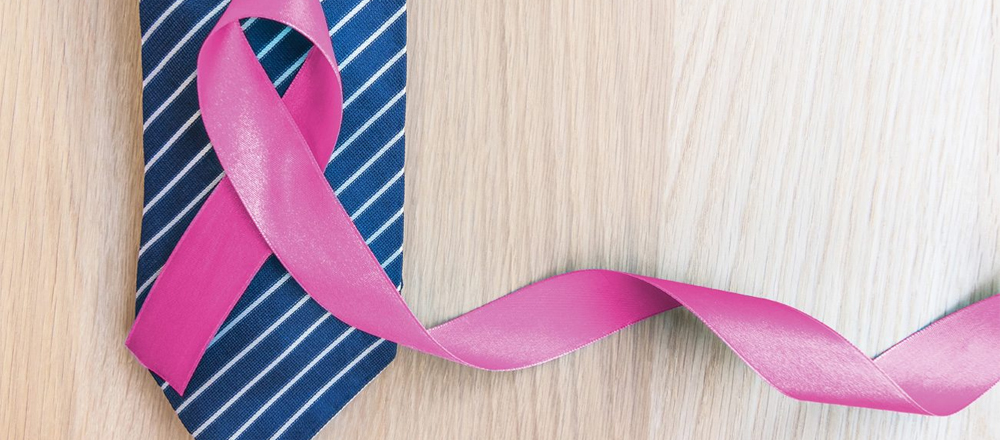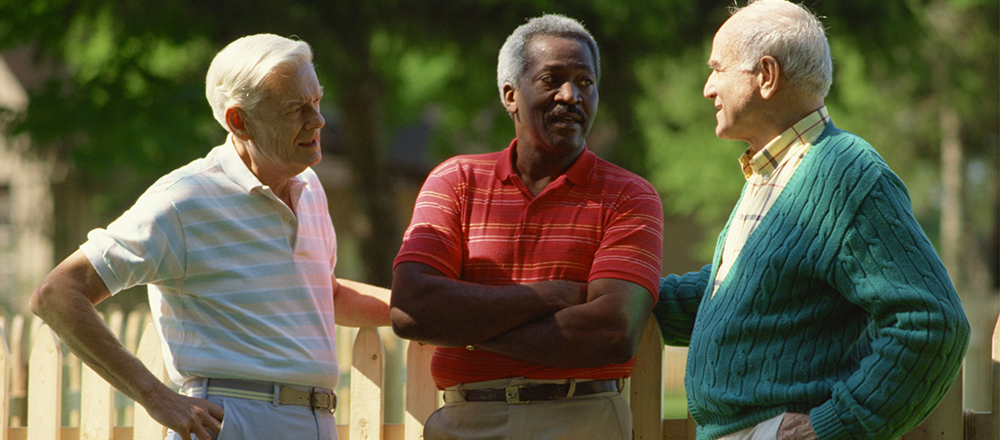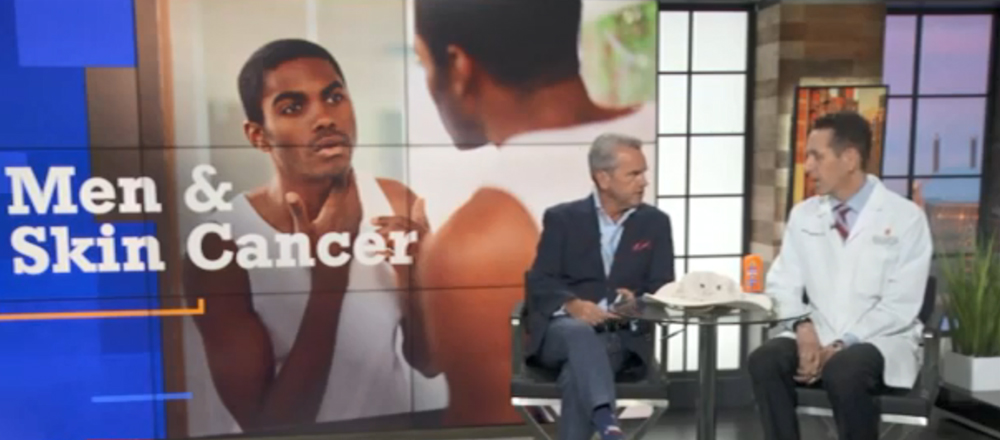Low Patient Awareness Hinders Male Breast Cancer Diagnosis
October 23, 2019By: Amy Bennett
Categories: Cancer, Men's Health, Prevention

More than 30 years after Breast Cancer Awareness Month was established, October has become synonymous with early breast cancer detection and treatment. Breast cancer mortality declined 39% in the U.S. from 1989-2015, according to the Susan G. Komen Foundation.
The incidence of breast cancer in men is rare compared to the incidence in women, with less than 1% of all breast cancers occurring in men. (See table.) Breast cancer in men is typically identified at a more advanced stage.
| Age-Adjusted U.S. Breast Cancer Incidence and Mortality | |||
|---|---|---|---|
| Men | Women | ||
| Incidence | 1.2 per 100,000 | 127.5 per 100,000 | |
| Mortality | 0.3 per 100,000 | 20.6 per 100,000 | |
Lack of Awareness
Late-stage diagnosis is due to several issues:
- Lack of awareness about male breast cancer
- Patient procrastination in seeking medical care
- Male embarrassment about physical changes in the breast or chest areas
When men present with breast cancer, it’s typically advanced by the time they feel a painless lump under their areola (pigmented area around the nipple) or a lump in their armpit. Yet, men tend to ignore their symptoms, which is due, in part, to a lack of awareness.
In addition to feeling a painless lump, other symptoms include:
- Breast dimpling, puckering or redness
- Change in breast size or shape
- Itchy, scaly sore or rash on the nipple
- Inverted nipple or other parts of the breast
- Nipple discharge
- Thickening in the breast, chest or underarm
Meritas Health Comprehensive Surgery and Meritas Health Surgery & Trauma board-certified surgeons have specialized knowledge of male and female breast cancer and provide high-quality, compassionate care.
Risk Factors
Having a BRCA1 or BRCA2 gene mutation is one risk factor, and men who have a family history of breast, prostate, pancreatic or ovarian cancer should seek genetic counseling and testing.
If a man has a family history and specifically a genetic mutation within his family, he ought to have a discussion with his primary care physician. If a man is genetically tested and found to be ‘BRCA-positive,’ he needs to go down the same path as a woman and seek consultation with a medical oncologist and breast surgeon (see box) to consider preventive surgery.
Such knowledge is paramount for family members. If a man is found to have a BRCA1 or BRCA2 mutation, he can notify his female family members so they can consider genetic testing.
In addition to the BRCA1 and BRCA2 gene mutations, men also should keep these risk factors in mind:
- Family history of breast cancer
- Gynecomastia (enlargement or swelling of breast tissue)
- Klinefelter’s syndrome
- Older age
- Overweight or obesity
Only about 14% of male breast cancers are ‘BRCA-positive’ so more than 80% of all male breast cancers have nothing to do with an inherited genetic syndrome.
North Kansas City Hospital patients can seek genetic counseling at NKCH.
Treatment
Given the late stage of diagnosis, primary treatment is mastectomy for men. Some will undergo chemotherapy before surgery (neoadjuvant) and radiation.
NKCH surgeons work closely with medical oncologists and radiologists at NKCH on behalf of these patients. Survival rates for men and women are similar when the stages of diagnosis are the same.
Generally, it’s a treatable disease, and men have an equally good prognosis as women.



